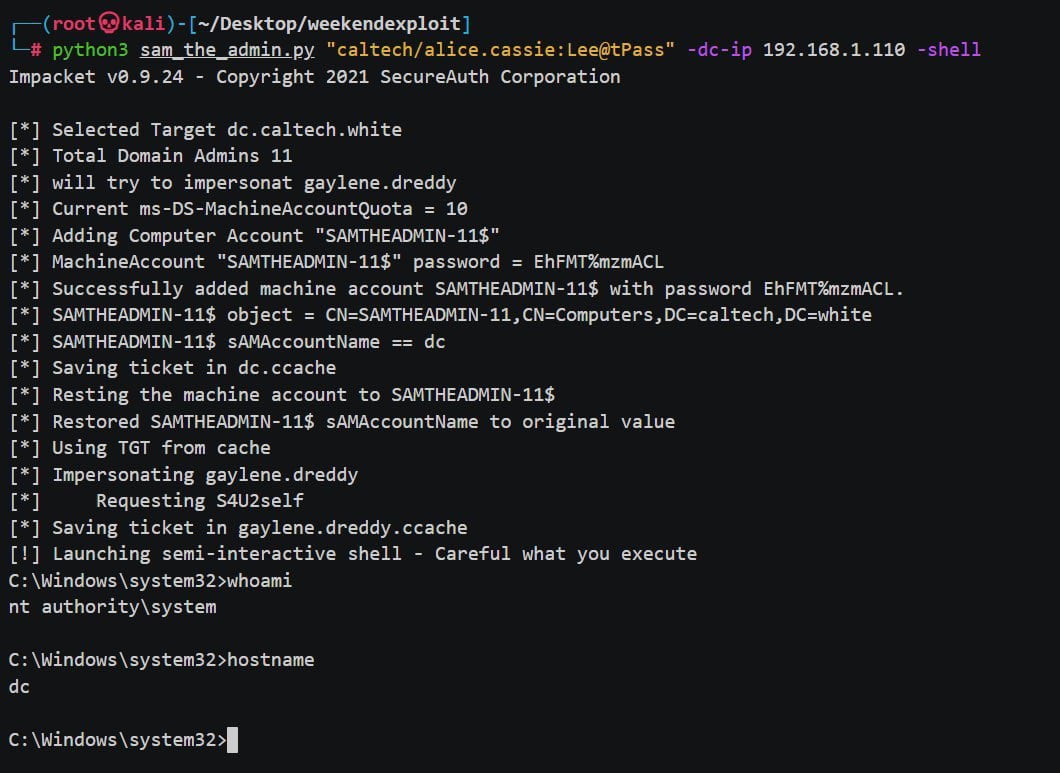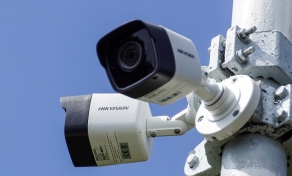
Microsoft warned customers today to patch two Active Directory domain service privilege escalation security flaws that, when combined, allow attackers to easily takeover Windows domains.
The company released security updates to address the two security vulnerabilities (tracked as CVE-2021-42287 and CVE-2021-42278 and reported by Andrew Bartlett of Catalyst IT) during the November 2021 Patch Tuesday.
Redmond's warning to immediately patch the two bugs — both allowing attackers to impersonate domain controllers — comes after a proof-of-concept (PoC) tool that can leverage these vulnerabilities was shared on Twitter and GitHub on December 11.
"When combining these two vulnerabilities, an attacker can create a straightforward path to a Domain Admin user in an Active Directory environment that hasn’t applied these new updates," Microsoft explains in an advisory published today.
"This escalation attack allows attackers to easily elevate their privilege to that of a Domain Admin once they compromise a regular user in the domain.
"As always, we strongly advise deploying the latest patches on the domain controllers as soon as possible."
Windows admins are urged to update all domain controllers using the steps and information available in the following knowledgebase articles: KB5008102, KB5008380, and KB5008602.
Researchers who tested the PoC said they were able to easily use the tool to escalate privileges from standard Active Directory user to a Domain Admin in default configurations.

How to detect exploitation, signs of compromise
Microsoft has also shared detailed guidance on detecting signs of exploitation in your environment and identifying potentially compromised servers using Defender for Identity advanced hunting query that looks for abnormal device name changes.
The step-by-step guide requires defenders to:
- The sAMAccountName change is based on event 4662. Please make sure to enable it on the domain controller to catch such activities. Learn more of how to do it here
- Open Microsoft 365 Defender and navigate to Advanced Hunting.
- Copy the following query (which is also available in the Microsoft 365 Defender GitHub Advanced Hunting query):
IdentityDirectoryEvents | where Timestamp > ago(1d) | where ActionType == "SAM Account Name changed" | extend FROMSAM = parse_json(AdditionalFields)['FROM SAM Account Name'] | extend TOSAM = parse_json(AdditionalFields)['TO SAM Account Name'] | where (FROMSAM has "$" and TOSAM !has "$") or TOSAM in ("DC1", "DC2", "DC3", "DC4") // DC Names in the org | project Timestamp, Application, ActionType, TargetDeviceName, FROMSAM, TOSAM, ReportId, AdditionalFields - Replace the marked area with the naming convention of your domain controllers
- Run the query and analyze the results which contain the affected devices. You can use Windows Event 4741 to find the creator of these machines if they were newly created
- We recommend investigating these compromised computers and determining that they haven't been weaponized.
"Our research team continues its effort in creating more ways to detect these vulnerabilities, either with queries or out-of-the-box detections," Microsoft added.
8 Common Threats in 2025
While cloud attacks may be growing more sophisticated, attackers still succeed with surprisingly simple techniques.
Drawing from Wiz's detections across thousands of organizations, this report reveals 8 key techniques used by cloud-fluent threat actors.










Comments
Zurv - 3 years ago
So if we patched Nov 2021 (and Dec 2021) we are "safe"?
serghei - 3 years ago
Yes, Microsoft patched both bugs in November.
Armondz - 3 years ago
Do's Dec patch includes fix for Windows Server auth issues (https://www.bleepingcomputer.com/news/microsoft/microsoft-new-security-updates-trigger-windows-server-auth-issues/) ?
serghei - 3 years ago
The authentication failures on domain controllers caused by patches for CVE-2021-42287 and CVE-2021-42278 were addressed in this out-of-band security update from November:
https://support.microsoft.com/en-us/topic/november-14-2021-kb5008602-os-build-17763-2305-out-of-band-8583a8a3-ebed-4829-b285-356fb5aaacd7
pede83 - 3 years ago
Isn´t the enforcementmode necessary to completly fix the issue?
After applying the patches and enabling the enforcementmode we had issues that clusterobjects couldn´t be updated, search for eventid 1207. And once set back to 1 nearly immediately errors stopped.
The cluster identity 'EXAMPLCLUSTER$' may lack permissions required to update the object. Please work with your domain administrator to ensure that the cluster identity can update computer objects in the domain.
Event ID: 1207 FailoverClustering